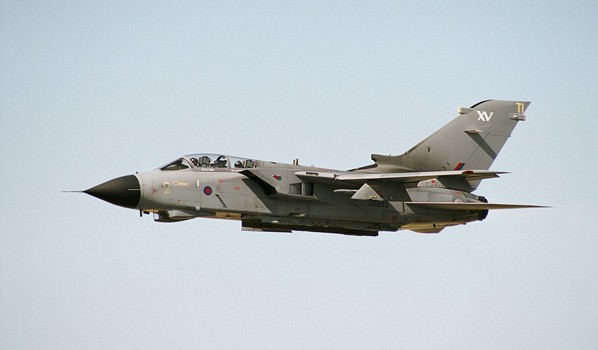The search for two British pilot missing after two Tornado jets crashed in the North Sea has been called off due to bad weather, but will resume early on Wednesday.
Two people were taken to hospital by helicopter after the incident in the Moray Firth off northeast Scotland, but two more are unaccounted for after the pair of two-seater Tornado GR4 jets went down.
“The circumstances remain uncertain but clearly this is a very serious incident,” Ian Gale, station commander of the Royal Air Force (RAF) base at Lossiemouth, northeast Scotland, said in a statement on Tuesday.
“This incident involved four aircrew – all personnel from this station – and the thoughts of everyone here are with the families and friends of those involved,” Gale added.
“I can confirm that two individuals have been recovered and two remain unaccounted for. Rescue operations are continuing.”
The RAF is investigating the incident.
The incident involved two GR4 Tornado aircraft, a type of combat jet that is in use in Afghanistan and was used extensively over Libya last year. The aircraft flew from RAF Lossiemouth, on the Moray coast, the UK’s biggest fast-jet base and home to three operational squadrons of Tornado GR4s, as well as the Tornado GR4 Operational Conversion Unit, which upgrades the jets
Each plane carries two crew. It is understood the jets were flying together and were involved in a practice bombing run shortly before the crash.
Around 15 lifeboat volunteers joined the rescue operation in three boats after reports that the jets came down about 25 miles south of Wick, Highland. Aberdeen coastguard contacted the Royal National Lifeboat Institution at about 1.50pm.
Boats were sent from Wick, Invergordon in Highland, and Buckie in Moray, towards the Beatrice oil field area, supported by a helicopter from Stornoway in the Western Isles. The crew from the Buckie boat reported that two people were taken from the sea by helicopter. As light faded over the crash site , the Buckie lifeboat brought some aircraft wreckage ashore.
In a statement, Group Captain Ian Gale, station commander at RAF Lossiemouth, confirmed the loss of the two Tornado GR4s and said four aircrew were involved. “The circumstances remain uncertain but clearly this is a very serious incident,” he said.
He said it was an “evolving situation” and he was not prepared “to comment at this time” on the condition of the two crew who had been recovered, or the circumstances surrounding the incident, except to say his thoughts were with the families and rescue operations were continuing.
“I am confident that the Tornado aircraft on this station are operated as safely as they possibly can be. However, today’s incident is a stark reminder that the military operations and training we conduct are not without risk.”
It is not the first incident involving aircraft from RAF Lossiemouth. An official investigation found that RAF Tornado aircraft have been involved in crashes in Scotland in recent years.
In January last year, two RAF crew were rescued after their Tornado GR4 from the base came down in the sea off the west coast of Scotland. The crew ejected before the plane hit the water near Gairloch, Wester Ross.
The Tornado GR4 is a two-seat attack aircraft, capable of delivering a variety of weapons and reaching a maximum altitude of 15,000 metres (50,000ft).
In July 2009, an RAF pilot and navigator were killed when their Tornado F3 jet crashed into a hillside in Argyll. Flight Lieutenant Kenneth Thompson, 27, and Flight Lieutenant Nigel Morton, 43, died in the crash near the village of Arrochar.
[adrotate banner=”33″]


